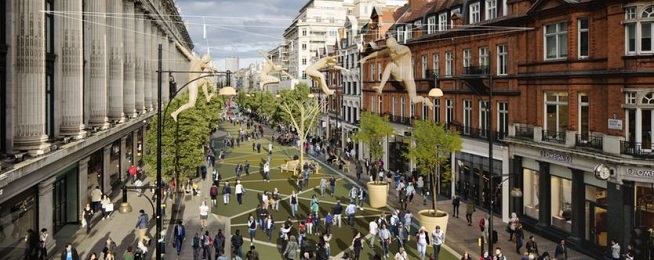Recently announced plans to make one of the world’s premier shopping streets – London’s Oxford Street – car free have been welcomed with wonder and acclaim. But did anyone pause to question what the plan did for bikes?
You guessed it: the plan excludes bikes from the street.
Oxford Street is a key east-west bike route through central London with more than 5000 riders a day using the section between Oxford Circus and Tottenham Court Road, making it one of the busiest in London.
The street is currently crowded with buses and and pedestrians, and is not bike friendly.
Yes thousands of riders use it because there is no other alternative parallel route.
London Lord Mayor, Sadiq Khan, is leading the charge to pedestrianise Oxford Street, in itself a laudable move. But bikes have been forgotten. The Lord Mayor has responded that the bike problem will be addressed in "future proposals".
Major cities around the world are moving to “de-car” their busy shopping and business districts because the commercial and liveability benefits are proving irresistible.
Such changes are made possible as public transport and bike transport grow rapidly, displacing motor vehicles.
But bike riders, having helped create the conditions that made such street makeovers possible, are now, in some cases, being considered dispensable.
Bicycle Network recently reported that the tram project through downtown Sydney plans exclusion zones for bikes in the interest of pedestrianisation of the street.
However cars and trucks are still permitted. Absurd!
As cities densify and bike use continues to climb rapidly, authorities will need to increase permeability and access for bikes, not decrease it.
This can happen along with pedestrianisation initiatives.
In many cases, parallel routes will be available, hiding in plain sight.
So much city street and lane space is taken up with parking for private vehicles—the worst possible economic utilisation of such valuable, publicly-owned real estate.
It is time for city managers to re-assess their priorities and ensure that valuable road space is put to its best use in making cities accessible for active transport.


